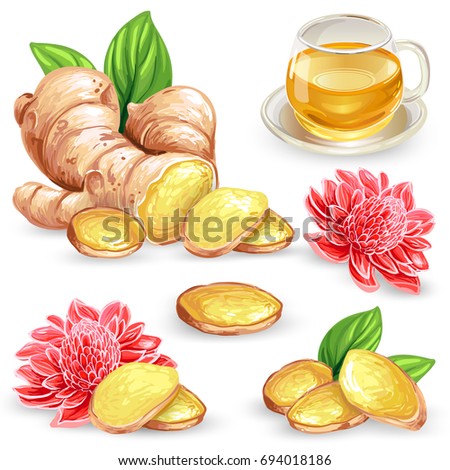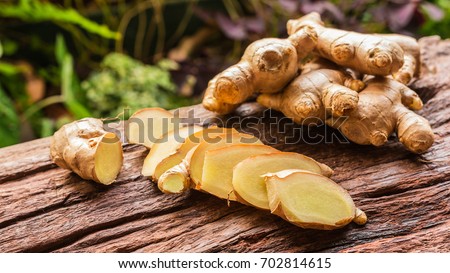Dr. Mercola writes that Ginger is a good source of vitamin C, magnesium, potassium, copper, and manganese. Ginger is listed as an herbal medicine with carminative effects: a substance that promotes the release of intestinal gas. It's also an intestinal spasmolytic, which relaxes and soothes the intestinal tract. That means it can settle an upset stomach, relieve vomiting, and ease gas and diarrhea discomfort; but it's also effective in preventing nausea in the first place.

Made into hot tea, ginger releases the compounds gingerol and protease, bringing a rush of comforting warmth that actually increases cardiovascular circulation.
Numerous studies have shown the effectiveness of ginger as a pain reliever, but the way it eases nausea and vomiting has to do with its ability to stimulate the flow of saliva. This is particularly effective for morning sickness (very safe, with only a small dose required) and motion sickness (said to be even more effective than the over-the-counter drug Dramamine).
Ginger reduces side effects associated with chemotherapy, including dizziness, nausea, vomiting, and cold sweating. Studies also show ginger to be protective against osteoarthritis pain and several cancers, including ovarian, colorectal, lung, and breast cancers.
Ginger has also been shown to:
• Enhance the bronchodilation in asthmatics.
• Improve blood glucose, triglyceride, total cholesterol and LDL cholesterol levels in diabetics. It also benefits diabetics by inhibiting carbohydrate metabolism and improving insulin sensitivity.
• Relieve motion sickness, morning sickness in pregnant women and general nausea and upset stomach.
Made into hot tea, ginger releases the compounds gingerol and protease, bringing a rush of comforting warmth that actually increases cardiovascular circulation. Its potent anti-inflammatory effects make it a particularly valuable tool for all sorts of pain relief. For example, research has shown it can help:
• Reduce knee pain associated with osteoarthritis.
• Decrease muscle soreness in athletes.
• Relieve menstrual pain in women as effectively as ibuprofen.
• Reduce severity of migraine headaches as well as the migraine medication Sumatriptan, and with fewer side effects.
Facts Credit: mercola.com



